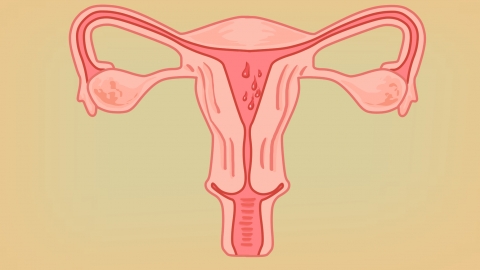What is the normal thickness of the endometrium?
Under normal circumstances, the thickness of the endometrium varies at different stages, typically measuring 2-4 mm during menstruation, 5-6 mm in early proliferative phase, 7-8 mm in mid-proliferative phase, 9-10 mm in late proliferative phase, 7-13 mm in secretory phase, and <5 mm after menopause. A detailed analysis is as follows:

Normally, the thickness of the endometrium varies according to the woman's physiological stage. During menstruation, the functional layer of the endometrium sheds, and the thickness typically remains between 2-4 mm. In the early proliferative phase, estrogen secreted by the ovaries begins to take effect, promoting gradual thickening of the endometrium, which generally measures 5-6 mm at this stage. By mid-proliferative phase, continuous stimulation by estrogen leads to further growth of the endometrium, reaching approximately 7-8 mm. In the late proliferative phase, the endometrium becomes even thicker, usually measuring 9-10 mm. During the secretory phase, under the influence of progesterone, the endometrium prepares for implantation of the fertilized egg and exhibits a relatively wider range of thickness, generally between 7-13 mm. In postmenopausal women, due to ovarian function decline and a significant drop in estrogen levels, the endometrium becomes markedly thinner, with a normal thickness of less than 5 mm.
If the endometrial thickness is found to be significantly abnormal during the corresponding phase—for instance, excessively thick during menstruation, overly thin during the secretory phase, or exceeding 5 mm after menopause—timely medical consultation and examination are required to rule out endometrial hyperplasia, polyps, or other pathological conditions. It is also important to monitor menstrual patterns in daily life. Should symptoms such as abnormal menstrual flow, prolonged menstruation, or irregular bleeding occur, an early gynecological examination is recommended to identify and address potential issues promptly.









